asNeeded
Type of resources
Available actions
Topics
INSPIRE themes
Provided by
Years
Formats
Representation types
Update frequencies
status
-
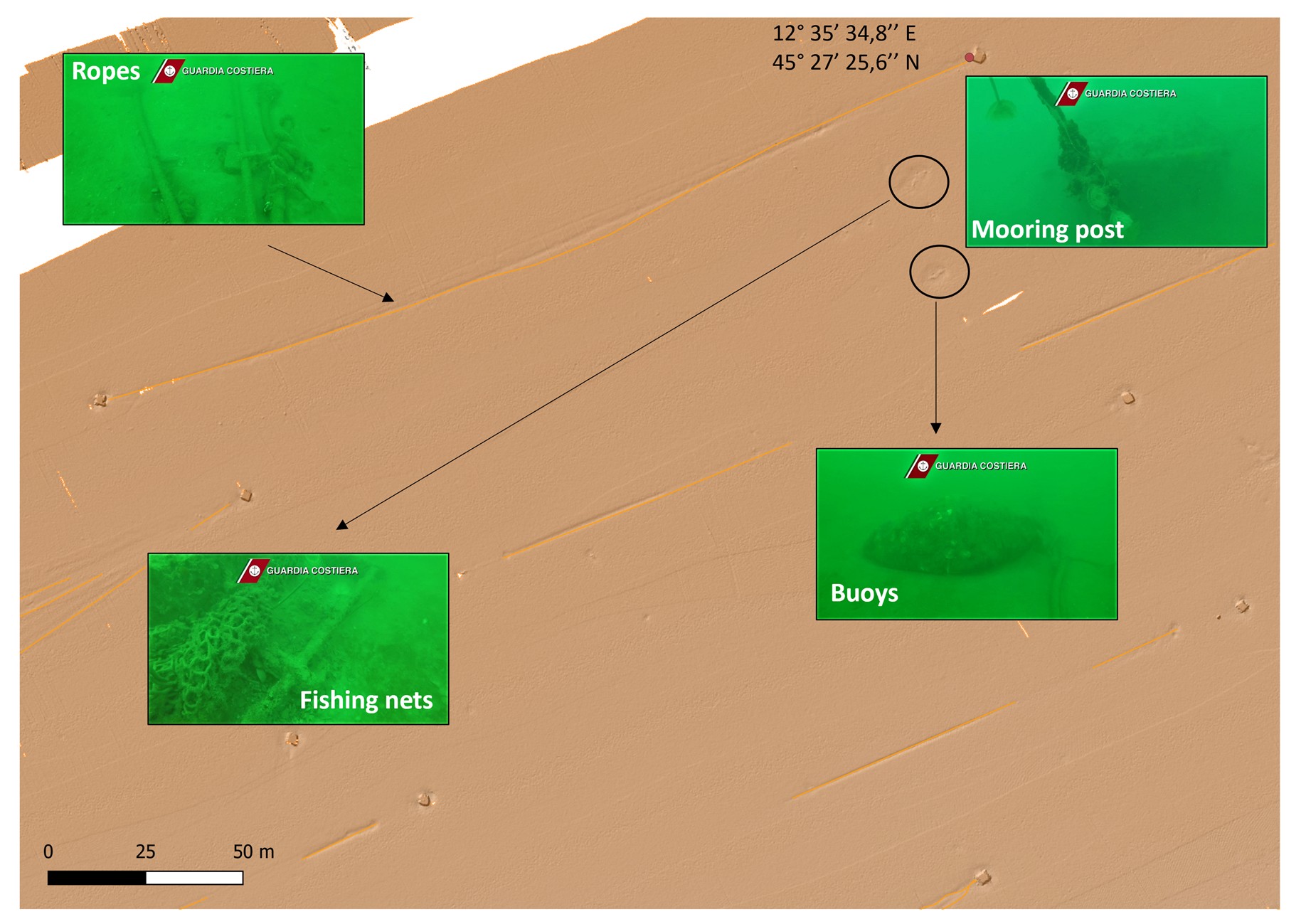
As part of the MAELSTROM project, a video survey was conducted on 23 September 2022 at the abandoned mussel farm (MF) site in the coastal area outside the Venetian lagoon. The purpose of the survey was to visually document and classify marine debris items on the seabed and to support the validation of previous bathymetric analyses. The inspection revealed several types of debris, including mooring structures, ropes, and derelict fishing gear, elements that are often challenging to detect through remote sensing techniques alone.
-

A bubble Barrier that removes litter from rivers is being applied in the Ave estuary (Portugal) in the framework of the MAELSTROM Project. In order to identify the location where the technology could possibly best be applied and to assess the impact of the litter removal on marine life, MAELSTROM makes use of numerical models. Facing the limited field data and absence of available models, we carried out field campaigns, set-up a hydrological model for the Ave river basin and set-up a hydrodynamic model for the estuarine region. The field studies included a bathymetric survey, short-term (12.5 hours) and long-term (several weeks) campaigns. Aiming to understand the temporal and spatial variation of the flow velocity in the estuary, and particularly in the area where the Bubble Barrier system is planned to be implemented, we have analysed observations from a boat sailing across the estuary (short-term), we have analysed observations at selected locations (long-term) and we have set-up a 3-dimensional (3D) hydrodynamic model to give insight in the flow velocity distribution. Only during the short-term campaigns the river discharge is known, which was relatively low during these campaigns. Since the river discharge is an important condition for the hydrodynamic model, we have only obtained maximal flow velocity maps for low river discharge. For higher river discharge we show a maximal flow velocity observed during a long-term campaign and we estimate maximal flow velocity based on an extreme river discharge.
-

As part of the European MAELSTROM project, passive acoustic monitoring (PAM) was conducted using a hydrophone deployed before and after the cleaning campaign carried out with a robotic platform at the Mussel Farm site. The primary aim of this acoustic monitoring was to analyze underwater soundscapes to detect the presence of soniferous organisms, with particular attention to fish and potentially invertebrate components.
-
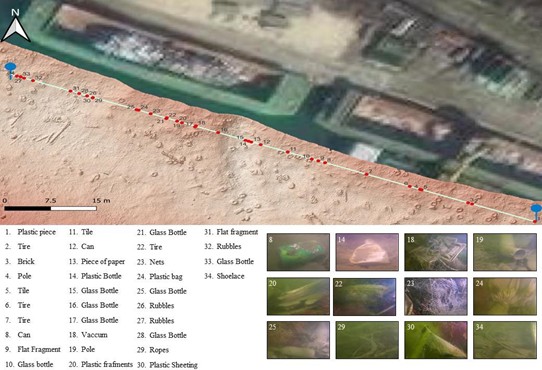
As part of the European MAELSTROM project, a combined approach using bathymetric analysis and underwater video inspections was applied to investigate marine litter (ML) accumulation on the seafloor in the urban area of Sacca Fisola (SF). The integration of multibeam echosounder (MBES) data with diver-operated video transects allowed not only the visual validation of acoustic results but also a more detailed mapping of litter items. During a 100-metre transect conducted by professional divers on 12 July 2022, 34 marine litter objects were identified and classified. This multiparametric strategy enabled the spatial georeferencing of debris and an estimate of their percentage coverage on the seafloor.
-

MAELSTROM (Smart Technology for Marine Litter Sustainable Removal and Management) is a Horizon 2020 (H2020) project co-funded by the European Commission, bringing together 14 partners, including research centers, recycling companies, marine scientists, and robotics experts, from eight European countries. The project seeks to reduce the environmental impact of marine litter (ML) on coastal ecosystems by identifying accumulation hotspots, intercepting floating river waste, and removing plastic-based debris from the seabed to prevent its breakdown into microplastics (MPs). At the core of MAELSTROM’s innovative solution is an advanced robotic seabed cleaning platform, developed collaboratively by TECNALIA, CNRS-LIRMM, and "Servizi Tecnici." This floating structure serves as a base station for the cleaning robot, deploying it via cables and winches while integrating a sophisticated suite of underwater sensors to detect, identify, and manage marine litter. The platform supports two key tools: a dredge for collecting smaller debris and a gripper for retrieving larger items, such as tires, boat fragments, and fishing nets. Designed to function as an adaptable and sustainable system, this platform exemplifies cutting-edge technology for marine litter removal and management.
-

MAELSTROM (Smart Technology for Marine Litter Sustainable Removal and Management) is a Horizon 2020 (H2020) project co-funded by the European Commission, bringing together 14 partners, including research centers, recycling companies, marine scientists, and robotics experts, from eight European countries. The project seeks to reduce the environmental impact of marine litter (ML) on coastal ecosystems by identifying accumulation hotspots, intercepting floating river waste, and removing plastic-based debris from the seabed to prevent its breakdown into microplastics (MPs). At the core of MAELSTROM’s innovative solution is an advanced robotic seabed cleaning platform, developed collaboratively by TECNALIA, CNRS-LIRMM, and "Servizi Tecnici." This floating structure serves as a base station for the cleaning robot, deploying it via cables and winches while integrating a sophisticated suite of underwater sensors to detect, identify, and manage marine litter. The platform supports two key tools: a dredge for collecting smaller debris and a gripper for retrieving larger items, such as tires, boat fragments, and fishing nets. Designed to function as an adaptable and sustainable system, this platform exemplifies cutting-edge technology for marine litter removal and management.
-
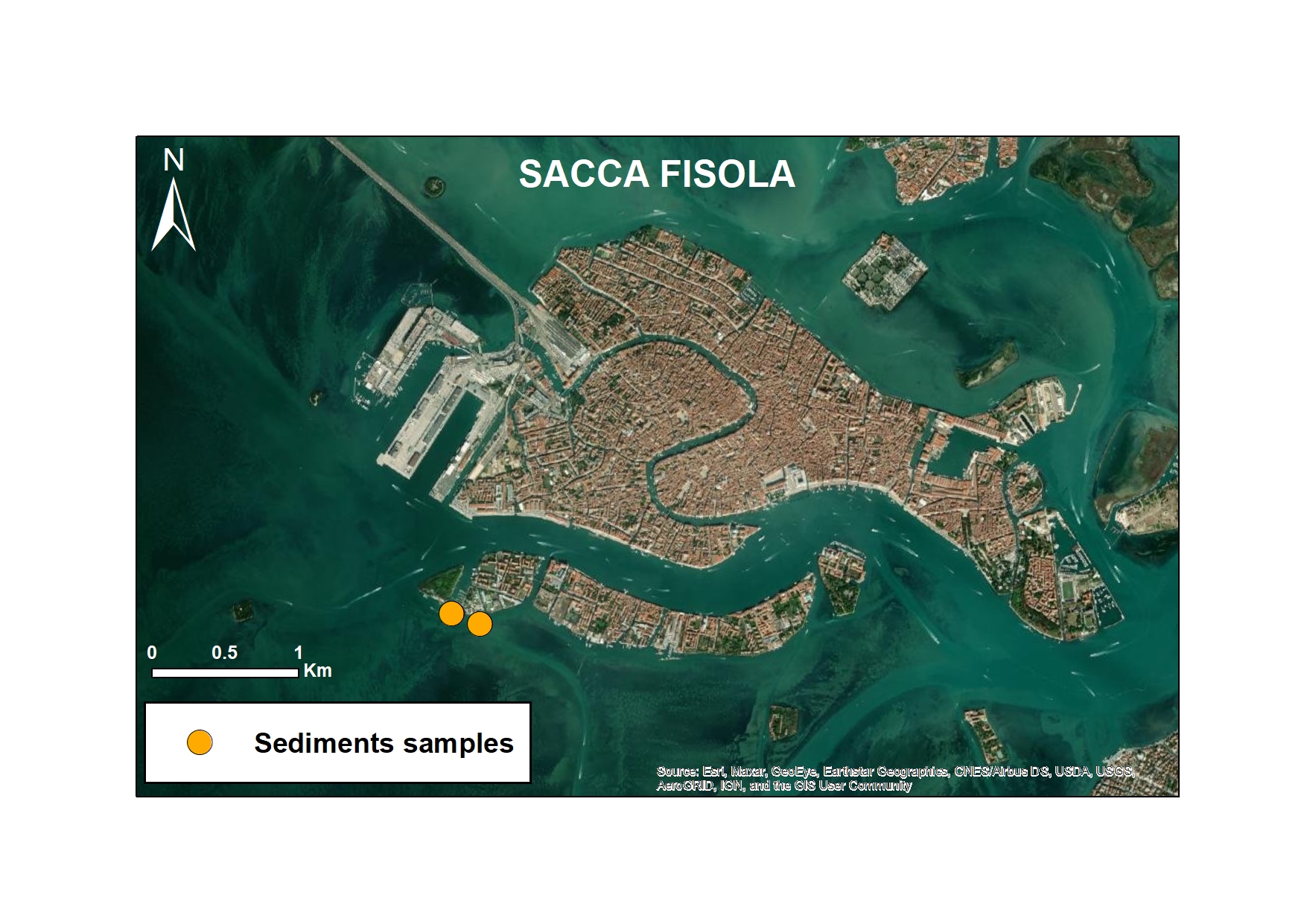
As part of the European MAELSTROM project, microplastic monitoring was carried out to assess the impact of marine cleaning operations. The study focused on two representative sites: Sacca Fisola, within the Venice Lagoon, characterised by high maritime traffic, and Mussel Farm, a coastal area near Cavallino-Jesolo, a former mussel farm. Both sites were monitored every six months and divided into before and after cleaning activities performed by the Seabed Robotic Cleaning Platform (autumn 2022 and spring 2023 for the Sacca Fisola site and spring 2023 for the Mussel Farm site). This innovative robotic system has been designed to remove macro-litter from the seabed. Monitoring also focused on surface sediments with the main objective of assessing the correlation between macro-litter removal and changes in MP concentrations in sediments.
-

As part of the European MAELSTROM project, microplastic monitoring was carried out to assess the impact of marine cleaning operations. The study focused on two representative sites: Sacca Fisola, within the Venice Lagoon, characterised by high maritime traffic, and Mussel Farm, a coastal area near Cavallino-Jesolo, a former mussel farm. Both sites were monitored every six months and divided into before and after cleaning activities performed by the Seabed Robotic Cleaning Platform (autumn 2022 and spring 2023 for the Sacca Fisola site and spring 2023 for the Mussel Farm site). This innovative robotic system has been designed to remove macro-litter from the seabed. Among the different matrices analysed, particular attention was paid to the biota, with the study of fish species representative of the North Adriatic area, both lagoon and coastal. The species analysed included mullet (Liza sp.), sea bream (Sparus aurata), spiny dogfish (Squalus acanthias) and sole (Solea solea). The main objective was to assess whether the removal of macro plastics from the seabed by the robot was correlated with a reduction in microplastics in the fish themselves, thus contributing to an understanding of the effectiveness of cleaning operations not only on visible debris, but also on the microscopic particles that can be accidentally ingested by these organisms.
-
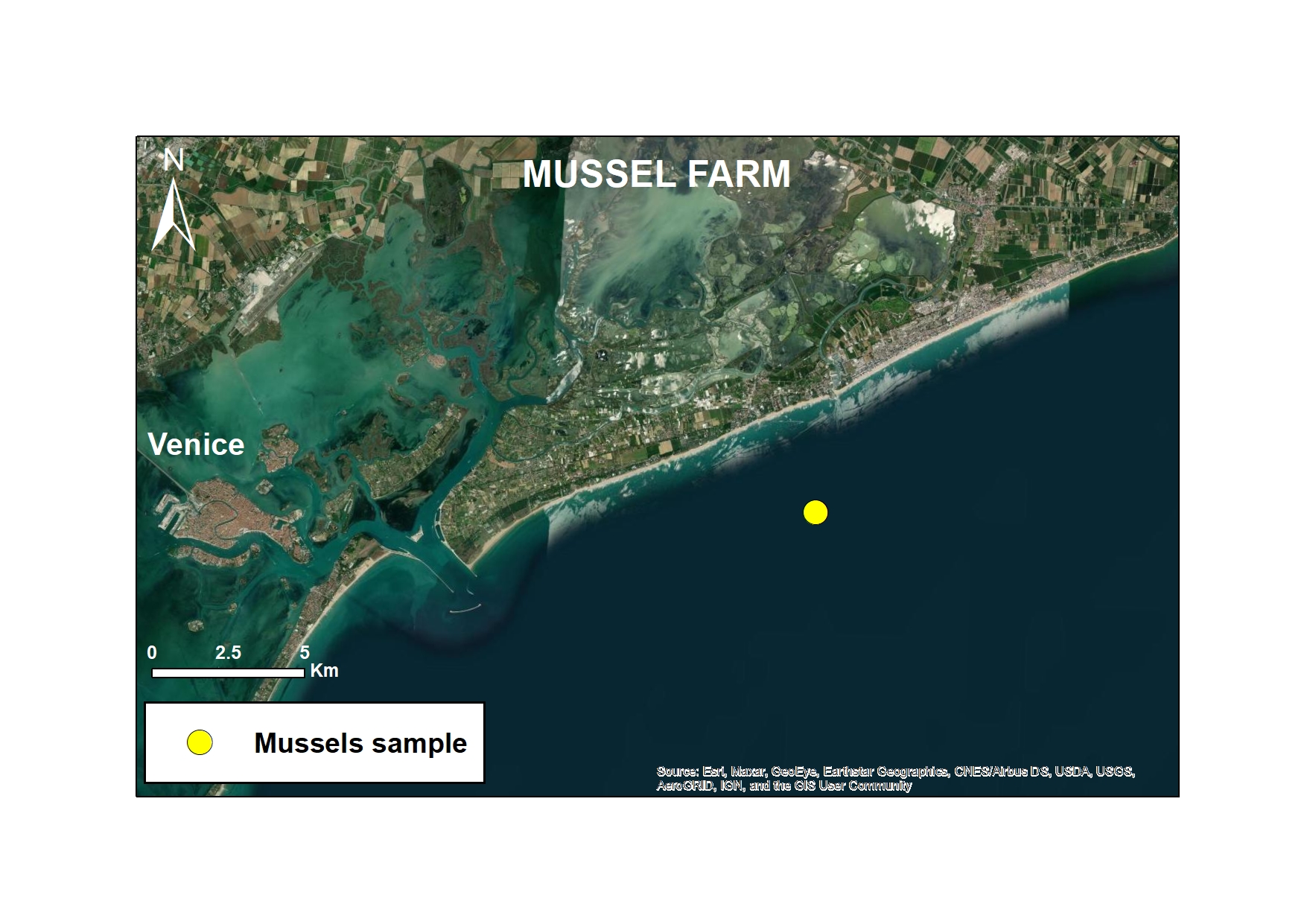
As part of the European MAELSTROM project, microplastic monitoring was carried out to assess the impact of marine cleaning operations. The study focused on two representative sites: Sacca Fisola, within the Venice Lagoon, characterised by high maritime traffic, and Mussel Farm, a coastal area near Cavallino-Jesolo, a former mussel farm. Both sites were monitored every six months and divided into before and after cleaning activities performed by the Seabed Robotic Cleaning Platform (autumn 2022 and spring 2023 for the Sacca Fisola site and spring 2023 for the Mussel Farm site). This innovative robotic system has been designed to remove macro-litter from the seabed. Among the matrices analysed, particular attention was paid to bivalves, which are used as bio-indicators. Several species, including Mytilus galloprovincialis, Magallana gigas and Ostreola stentina, were sampled to monitor the accumulation of microplastics (MPs) in them. The main objective of the study was to assess whether the removal of macrolitter resulted in a reduction of microplastics in the environment.
-

As part of the European MAELSTROM project, microplastic monitoring was carried out to assess the impact of marine cleaning operations. The study focused on two representative sites: Sacca Fisola, within the Venice Lagoon, characterised by high maritime traffic, and Mussel Farm, a coastal area near Cavallino-Jesolo, a former mussel farm. Both sites were monitored every six months and divided into before and after cleaning activities performed by the Seabed Robotic Cleaning Platform (autumn 2022 and spring 2023 for the Sacca Fisola site and spring 2023 for the Mussel Farm site). This innovative robotic system has been designed to remove macro-litter from the seabed. Monitoring also focused on surface sediments with the main objective of assessing the correlation between macro-litter removal and changes in MP concentrations in sediments.
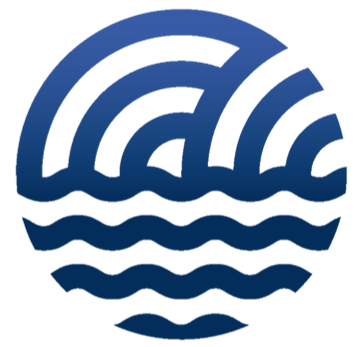 CNR-ISMAR
CNR-ISMAR